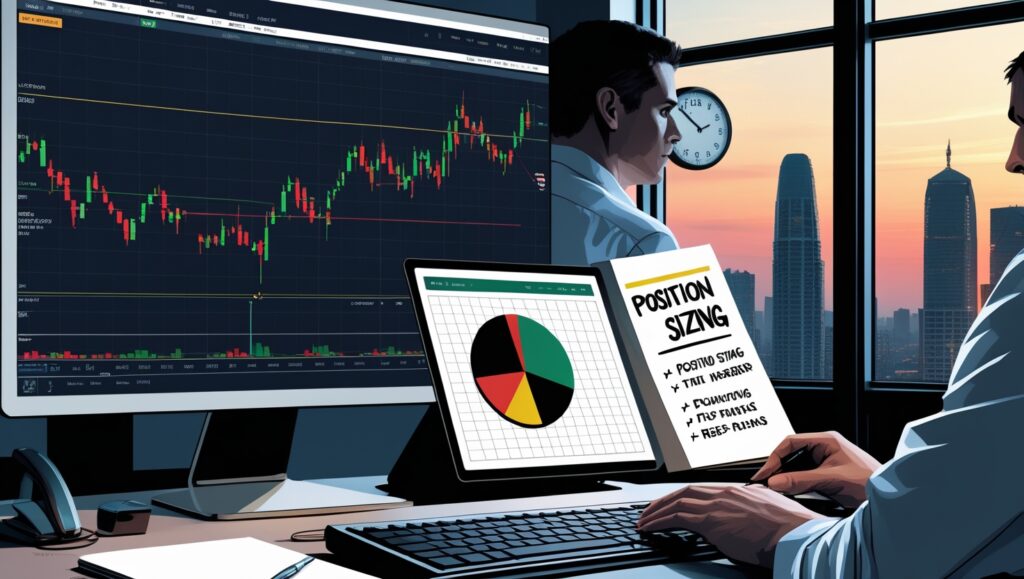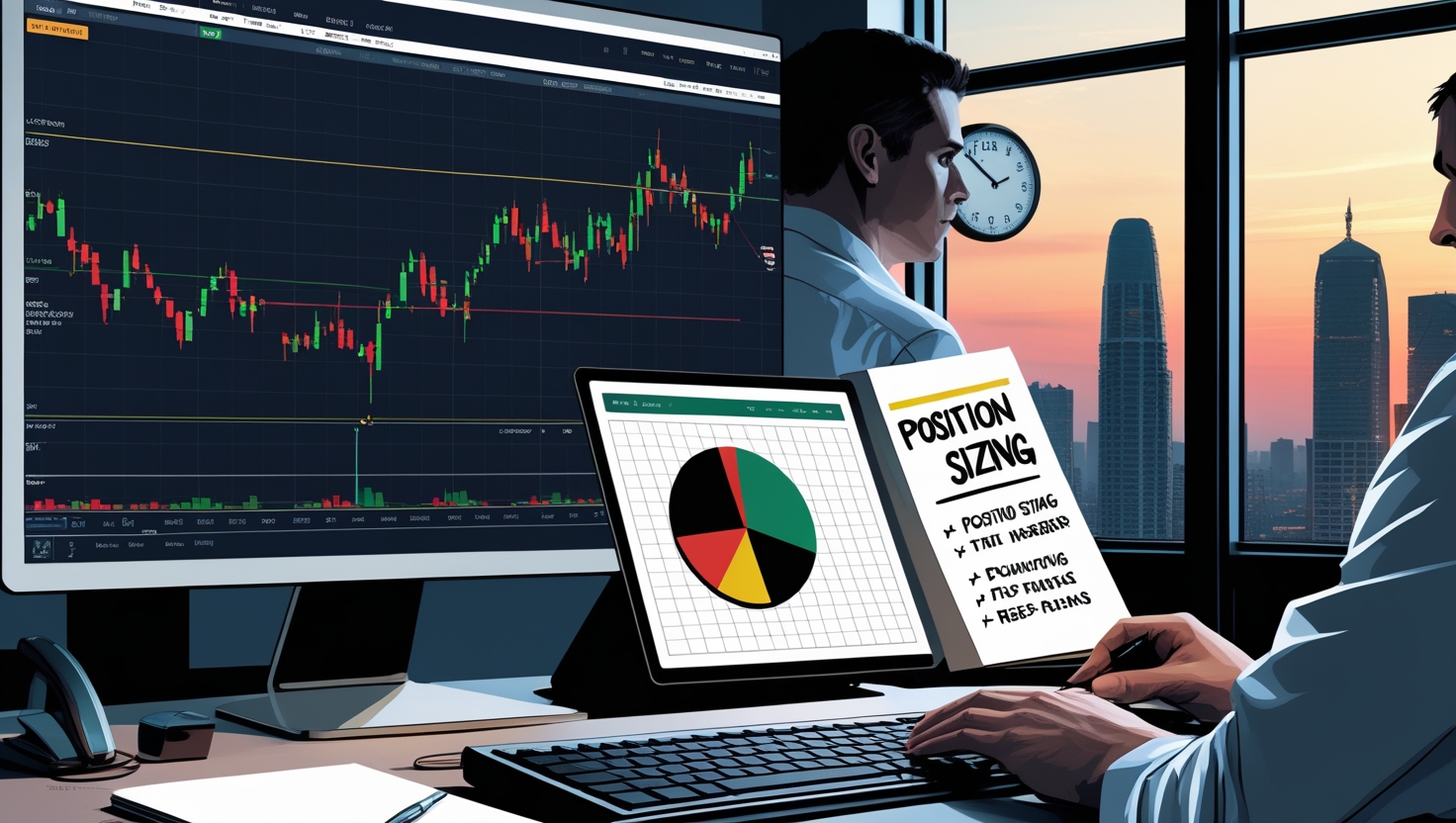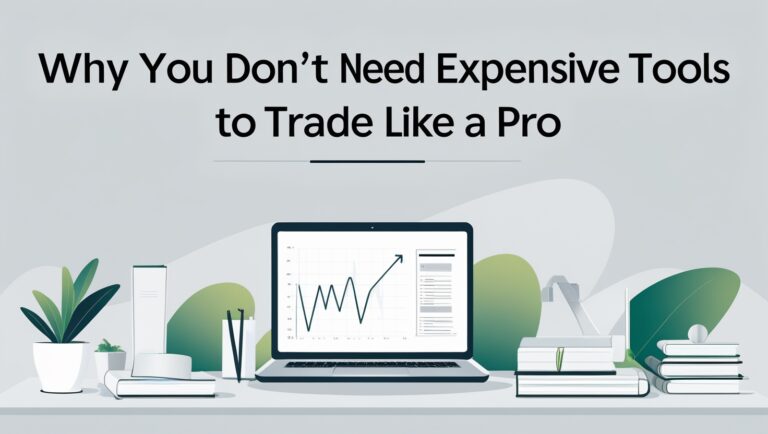Swing Trading vs. Day Trading: Which Style Fits Your Lifestyle
Swing Trading vs. Day Trading: Which Style Fits Your Lifestyle
When I first started trading, I struggled to decide between swing trading and day trading. Both styles have unique advantages, risks, and lifestyle implications. Over time, I realized that picking the right style isn’t just about potential profits—it’s about how it fits your daily routine, personality, and emotional tolerance.
In this guide, I’ll break down the differences, help you figure out which style suits you best, and show how to use tools that make trading easier and more consistent.

Table of Contents
What Is Day Trading?
Day trading involves buying and selling stocks or other assets within the same trading day. Trades are opened and closed before the market closes, meaning you never hold overnight risk. I personally used day trading early on to practice fast decision-making and learn price action patterns quickly.
Day trading requires focus, quick reactions, and the ability to manage stress under pressure. It’s not just about making money fast—it’s also about sticking to a well-structured trading plan and controlling your emotions throughout the day.
What Is Swing Trading?
Swing trading is a medium-term strategy where positions are held from a few days to several weeks. This style capitalizes on price swings and trends rather than intraday volatility. I’ve found swing trading allows more flexibility in my schedule while still generating consistent profits when combined with proper risk management.
Swing trading suits people who can step away from screens but still want to take advantage of market trends. It also reduces the stress of watching every tick while letting your setups play out according to plan.
Key Differences Between Day Trading and Swing Trading
- Time Commitment: Day trading requires active monitoring throughout the market session, while swing trading allows checking positions a few times per day.
- Trade Frequency: Day traders may place dozens of trades per day, whereas swing traders focus on fewer, higher-quality setups.
- Emotional Demands: Day trading can be intense and stressful, while swing trading is generally calmer but requires patience.
- Risk Management: Both styles require discipline, but position sizing and stop-loss strategies differ depending on holding time.
How to Decide Which Style Fits You
Choosing between day trading and swing trading comes down to your personality, schedule, and emotional tolerance. I recommend asking yourself:
- Can I stay focused for several hours without getting stressed?
- Do I prefer fast results or consistent, measured gains?
- How much time can I dedicate daily to trading?
Answering these questions honestly will help you choose the trading style that complements your lifestyle and personality.
Using Technology to Improve Both Styles
Whether you choose day trading or swing trading, having the right tools is critical. I rely on professional charting platforms to track trends, set alerts, and manage trades efficiently. Click here to the best platform I use daily: Click here to TradingView.
With alerts, multiple watchlists, and automated scanning, you can stay on top of setups without being glued to your screen all day.
Risk Management Is Crucial in Both Styles
I cannot emphasize this enough: no matter your trading style, risk management is the foundation of success. Day traders often use tighter stops with smaller positions, while swing traders use wider stops with carefully calculated allocations. The goal is the same—protect your account and stay in the game long-term.
Combining Your Style With Proven Strategies
I use methods from How I Pay My Bills Monthly With Stocks to complement both swing and day trading. These strategies allow me to generate steady monthly income while managing risk effectively. Even beginners can follow this approach to develop confidence and consistency.
Lifestyle Considerations for Each Style
Day trading is best if you enjoy a fast-paced environment and have hours to focus during market hours. Swing trading fits better if you have a full-time job or prefer a less intense approach. Consider your personal routine, stress tolerance, and financial goals before committing to one style.
Final Thoughts
Both swing trading and day trading have the potential for profitability, but success comes from choosing the style that aligns with your lifestyle and personality. Combine it with proper position sizing, risk management, and the right tools, and you increase your chances of long-term success.
Understanding Volatility Differences Between Styles
Day trading thrives on intraday volatility. I focus on stocks or markets that swing significantly within hours to capitalize on short-term price movements. Swing trading, on the other hand, targets multi-day trends, meaning volatility affects entries differently. By adjusting position sizes based on volatility, I maintain consistent risk across both styles.
How Emotional Control Impacts Day Traders
Day trading can be mentally taxing. Watching price move quickly triggers fear and greed, and beginners often make impulsive decisions. I combat this by following strict entry rules and stop-loss placement, combined with using professional charting tools. Click here to the best platform: Click here to TradingView.
Swing Trading Reduces Screen Time Stress
Swing trading allows me to step away from charts and maintain my lifestyle while still profiting from market trends. Since trades span days or weeks, I only need to monitor positions periodically, making it easier to manage emotions and avoid overtrading.
Combining Swing and Day Trading Strategically
Some traders, like myself, combine both styles for diversification. I use day trading for quick setups when volatility is high, and swing trading for slower, steady trends. Balancing both requires careful position sizing and time management, but it can optimize income and reduce stress.
How Market News Affects Each Style Differently
Day traders must react instantly to news and earnings reports, while swing traders can plan around potential events. I schedule alerts for major news that may impact my trades, ensuring I don’t get caught off guard regardless of style.
Position Sizing in Swing vs. Day Trading
I adjust position sizes based on holding periods. Day trades often have smaller allocations due to tighter stops, while swing trades may use slightly larger positions with wider stops. This strategy ensures consistent risk management and protects my account over time.
How Technical Analysis Supports Both Styles
Technical analysis is critical for both approaches. I look for intraday patterns for day trading and trend reversals for swing trading. Platforms like TradingView allow me to track multiple indicators simultaneously, keeping my analysis efficient and accurate.
Risk-to-Reward Ratios for Swing and Day Trading
Day trades often target small gains but require higher win rates, whereas swing trades aim for larger moves with fewer trades. I calculate risk-to-reward ratios before entering any trade, ensuring each trade justifies the risk taken.
Time Commitment and Lifestyle Fit
Day trading demands full-time focus during market hours, which may not fit everyone’s lifestyle. Swing trading is more flexible, letting me manage trades alongside other responsibilities. Assessing your schedule honestly is key to picking a style that won’t lead to burnout.
How Stop Loss Placement Differs
I place tight stops for day trades to protect capital during fast moves. For swing trades, stops are set wider to accommodate daily fluctuations. This difference is crucial for surviving both styles and maintaining emotional stability during losing streaks.
Combining Alerts With Each Style
Using alerts is a game-changer for both swing and day trading. They notify me when a stock hits a target or trend changes, letting me act quickly for day trades or monitor swing trades without constant chart-watching. Click here to the best platform: Click here to TradingView.
Common Mistakes Beginners Make in Each Style
Day traders often overtrade or chase setups, while swing traders may hold losers too long. I’ve learned to stick to predefined rules, position sizes, and stop-loss placements, which dramatically improves results and reduces emotional stress.
How I Track Performance Differently
I maintain separate logs for swing and day trades, tracking entries, exits, emotional state, and outcomes. This helps me identify what works, what doesn’t, and how each style contributes to my overall monthly income.
Tools That Streamline Both Styles
Professional charting platforms allow me to watch multiple markets, set automated alerts, and analyze historical data. These tools reduce mistakes and help me execute trades confidently without overanalyzing. I recommend checking out this platform: Click here to TradingView.
Creating a Hybrid Strategy That Fits Your Life
After experimenting with both, I developed a hybrid strategy: focusing on swing trades as the foundation for income while selectively day trading high-probability setups. This approach balances time commitment, stress, and profit potential while using the same principles from How I Pay My Bills Monthly With Stocks.

Stay ahead in the stock market! Subscribe to our newsletter and receive exclusive stock flow reports, trading insights, and actionable tips directly in your inbox. Join thousands of traders who get our updates first.







